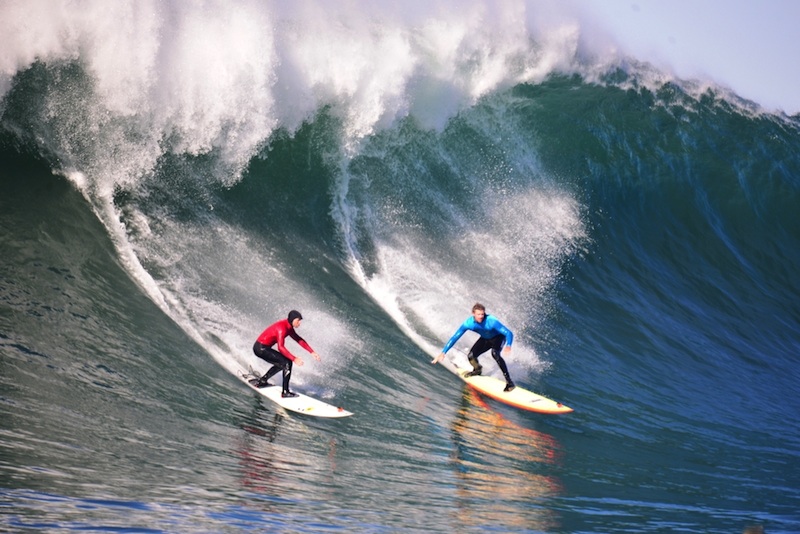
Right now, the world's best surfers are riding the monster waves at Titans of Mavericks, an elite surf competition that pits big-wave riders against the monster swells at a Northern California Beach.
The competition happens every year in the winter at Pillar Point in Half Moon Bay, California, at a time when the waves and weather align. When the forecast looks good, surfers have just 48 hours to make it to the competition. In 2015, the comeptition wasn't called because the huge swells never showed up.
Waves this year were slated to reach 50 feet (15 meters) tall, with winds of 46 to 75 mph (40 to 65 knots), Surfline reported.
But just why do the waves get so big at this particular time and spot? [In Photos: Famous Surf Spots Around the World]
Winter storms thousands of miles away over the Pacific Ocean near Alaska provide the energy. There, a low-pressure front from the north collides with a high-pressure front from the south. The resulting pressure differential generates strong, fast winds that blow over a vast area of ocean for long periods of time. This wind energy then transfers to the ocean, where it creates big swells.
The tides also play a role in Mavericks' monster waves. During the transition from high to low tide, wave energy roiling the ocean reaches the seafloor. This energy has nowhere to go but up, increasing the wave's height, according to Bay Nature, a San Francisco-area magazine.
But the real magic comes from Half Moon Bay's bizarre geometry. After all, the beaches nearby don't get the same massive waves. The crests at Pillar Point, by contrast, can get so big that they register on seismographs miles away.
Sign up for the Live Science daily newsletter now
Get the world’s most fascinating discoveries delivered straight to your inbox.
In 2007, researchers from California State University at Monterey Bay and the National Oceanic and Atmospheric Administration used sound waves to create contour maps of the ocean floor near the competition. These maps show a ramp that rises sharply, but drops off steeply on either side, creating what the surfers call a launching pad.
When waves come from the right direction, the big ones touch the ocean floor and slow down, then curve into a "v" that focuses the wave's energy. With its energy focused, the wave quickly jumps in height, and the Big Kahuna is born, KQED's Quest reported.
Follow Tia Ghose on Twitterand Google+. Follow LiveScience @livescience, Facebook & Google+. Original article on LiveScience.

Tia is the managing editor and was previously a senior writer for Live Science. Her work has appeared in Scientific American, Wired.com and other outlets. She holds a master's degree in bioengineering from the University of Washington, a graduate certificate in science writing from UC Santa Cruz and a bachelor's degree in mechanical engineering from the University of Texas at Austin. Tia was part of a team at the Milwaukee Journal Sentinel that published the Empty Cradles series on preterm births, which won multiple awards, including the 2012 Casey Medal for Meritorious Journalism.










